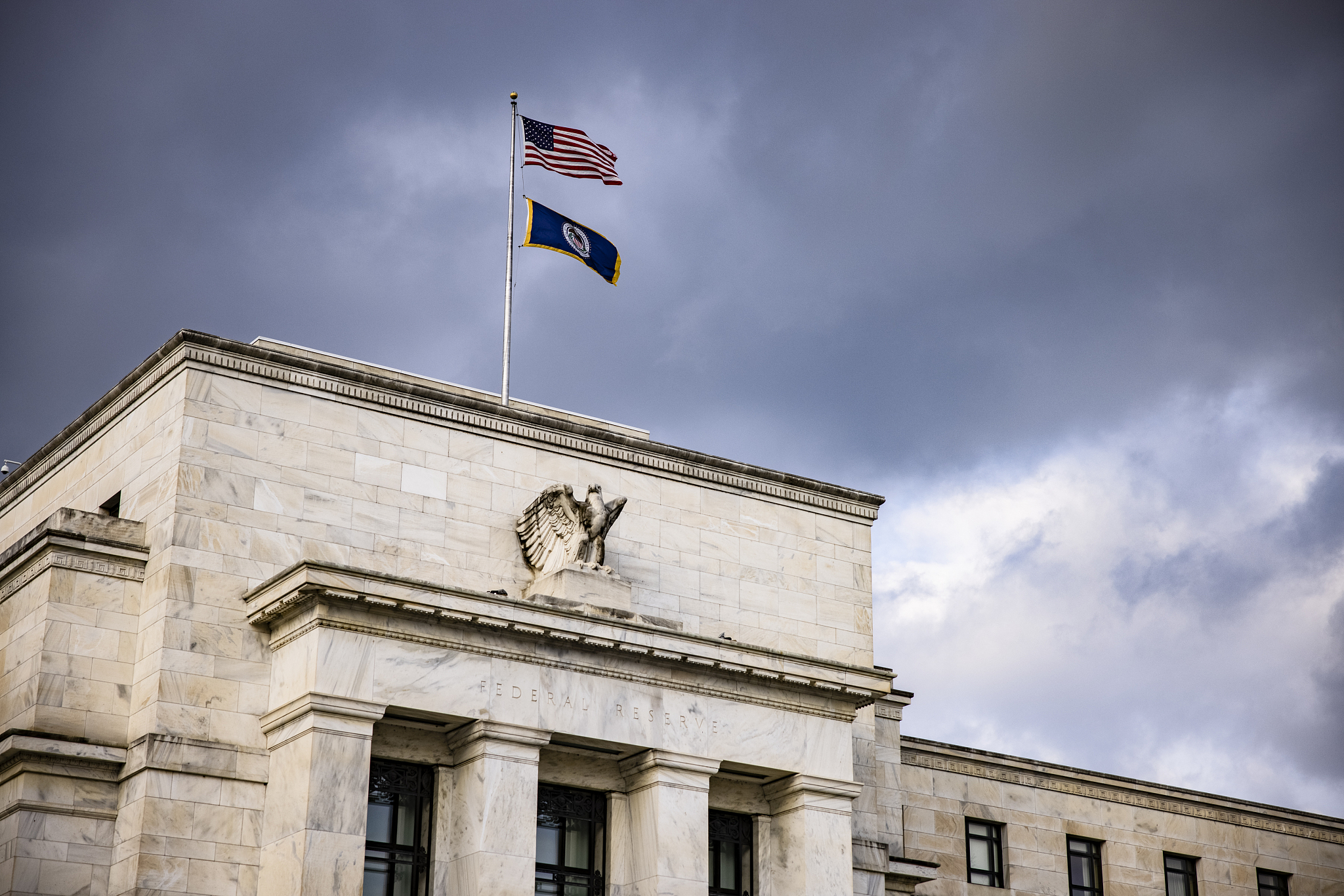Editor's note : Bobby Naderi is a London-based journalist, guest contributor in print, radio and television, and documentary filmmaker. The article reflects the author's opinions, and not necessarily the views of CGTN.
The planet's former "financial superpower" is edging into decline and the International Monetary Fund (IMF) has just offered another vivid picture as many central banks head toward a multi-polar world in which the decline of the U.S. dollar as a global reserve currency is almost certain.
According to the IMF, the reach of the U.S. dollar as the global reserve currency is declining as central banks reduce the share of U.S. dollar reserves. The IMF's new data show that the share of U.S. dollar reserves held by central banks fell to 59 percent - its lowest level in 25 years - during the fourth quarter of 2020. At the same time, the share of other currencies like the Chinese yuan (renminbi) and Euro climbed to 9 percent, both in terms of payment system and depth of the financial market.
It's not hard to see why central banks are avoiding the greenback like the plague. The cast of forces that avail themselves for the play includes synchronized international trade, new financial architecture, great-power competition and short-term exchange rates, plus digital currencies, new technologies and cycles of history that remind us the average lifespan of reserve assets is just around 100 years.
'Creating' money from scratch
The United States, the most indebted nation in the history of humanity, seems to be heading for a dollar collapse and a sovereign debt crisis. It is bound to happen, as the Federal Reserve keeps "creating" dollars from scratch in the trillions with zero regard for future consequences. The government issues new debt and the Fed prints more money to buy it, only to sell it as treasury bills and bonds to other countries.

The Marriner S. Eccles Federal Reserve building in Washington, D.C., U.S., February 19, 2021. /Getty
Just to make this clear: It's a lie that there is still an unlimited global demand for U.S. debt and profligacy, or that the U.S. could keep overspending on forever wars, consumption, excessive debt, and easy credit. The Federal Reserve cannot print uncontrollably and the world cannot buy U.S. debt ad infinitum. Global trade might not abandon the U.S. dollar just yet, but the coronavirus made clear that non-dollar investors could still discount the greenback and run for safety elsewhere in search of alternative stores of wealth.
Many countries and market participants have been able to borrow alternative currencies, including yuan, euro, and digital currencies, to buy resources and make international transactions. They now repay their debt at lower interest rates, which has pulled the rug from under the U.S. dollar. It's a new financial architecture that has been developed around proposed digital and alternative currencies to displace the dollar's dominance in credit markets gradually.
The implications are immense. The U.S. is unable to emerge from the pandemic and its prolonged economic impact with the dollar-dominated system intact. It cannot "print" and abuse the dollar as a convenient weapon of choice to preserve its global economic and geopolitical position. There is a limit to deficit spending and money printing.
Central banks have every right to consider abandoning the dollar as a medium of world trade, from lending to exchange clearing, and through the renminbi, euro, and other pricing. They can also trade in national currencies to avoid Washington's authorizations and adversarial ways. It is a logical and legal reaction.
Alternative currencies in the spotlight
China's central bank is reportedly making progress with testing its digital yuan currency, as the prospect of mobile business and consumer transactions has become widespread. The digital yuan is a version of the normal yuan deployed on a blockchain. It allows the market to choose how to settle international transactions.
China is also developing a platform for making the digital yuan internationally viable that involves its trading partners and the Bank of International Settlements. It is the first country to put the government-backed currency fully on an international blockchain, where issuance of digital yuan is the same as issuance of cash in circulation, making it just as secure.
Not to be left behind, other central banks in the world like the Bank of England and the European Central Bank, as well as those in Japan and South Korea, are moving on their own digital currencies. They also seek to have better control over money supply, since, unlike cash, they can see all the transactions taking place and keep monetary controls and trade transparency requirements in their own hands.
As modern history shows, the risks of being left behind are indeed too great to ignore. The idea that the U.S. economy will soon have recovery is fantasy. Even the U.S. needs a new global monetary system to avoid drowning. It is vital that all central banks begin testing digital and alternative currencies to reinvent and globalize the way they want to conduct international trade and payments based on a multilateral rules-based framework.
As reported by the IMF, countless factors have been driving the U.S. dollar's ominous future and it cannot be dismissed. With U.S. Treasuries yielding effectively zero and money printing in overdrive, there is no debate that the time has come for central banks to build alternative banking systems and trading currencies. Given how much is at stake, they stand to win if they reduce their exposure to America's "printing" addiction and corrupt mess of a force.
(CGTN)
 简体中文
简体中文

